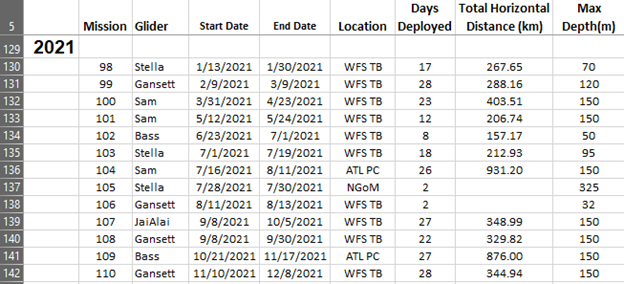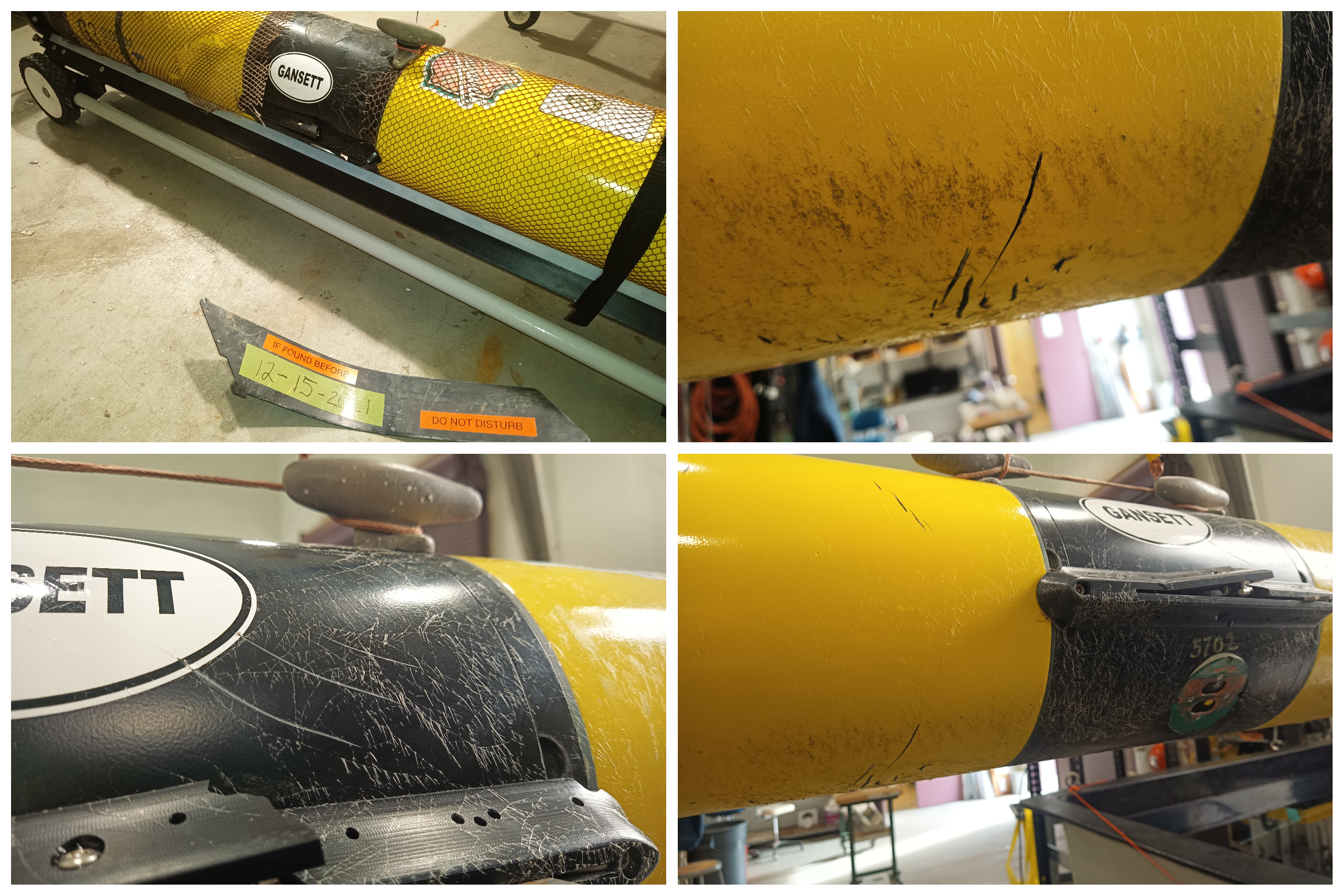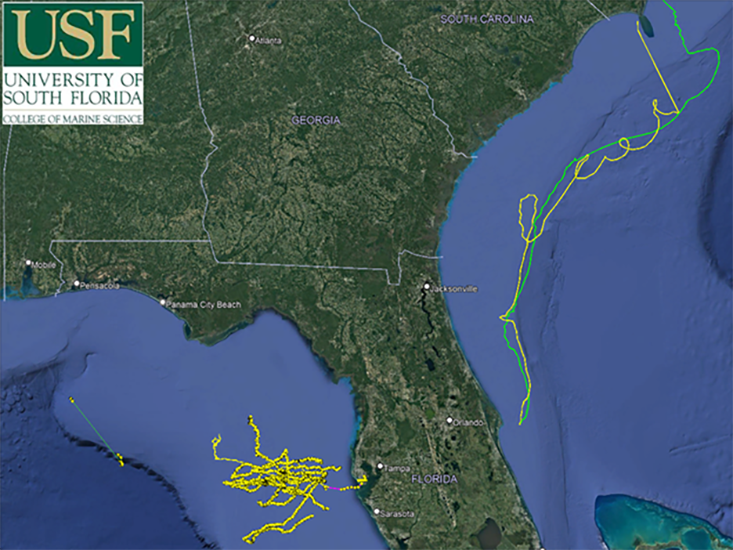Written by Kristen Kusek, Former Communications Director for USF CMS
The USF Glider Fleet was out and about collecting data in the Gulf of Mexico and Atlantic Ocean for 240 days of 2021 – a smashing success to celebrate amidst all of the challenges brought our way in 2021.
Most of the glider expeditions took place on the West Florida Shelf. Some took place in deeper Gulf waters, and two missions took place in the Atlantic Ocean (see map above). Of 13 attempted missions, the team aborted two due to leaks, and one was picked up by a fisherman.

The tally pulled from the internal log shows 240-ish glider days spanning every month of the year 2021.
Notably, the fleet experienced at least three shark strikes in 2021. In the last deployment of 2021, for example, our CMS glider guru, Chad Lembke, wrote in an email update that one glider encountered one or two “biological interferences” – a much more reserved way of saying: SHA-A-A-A-A-R-K!
“We believe the first one bent one of the aluminum wings and the second hit ripped off the other wing. By the end the glider was flying with a 20-degree roll with one bent wing,” said Lembke. One bite mark, currently under investigation by a shark expert, measured 7.5 inches across.

A collage of 4 shark bite images.
Fieldwork is never without risk and overall, 2021 was a banner year.
“Lots of late nights, early mornings, boat rides, and glider drives to get the job done,” said Lembke. “It’s so rewarding (and important) to have a good team, and I want to send my thanks to the glider team and collaborators, including Alex Silverman, Heather Broadbent, Randy Russell, Garrett Miller, Sean Beckwith, Edmund Hughes, Abigail Vivlamore, Karen Dreger, and Sarah Grasty.”
The aforementioned people work a lot on other projects outside of gliders, Lembke said, and it reflects “a great distribution of CMS talent that keeps our glider program moving forward.”
Financial support for the 2021 year was provided by SECOORA, GCOOS, NOAA, and FWRI.
